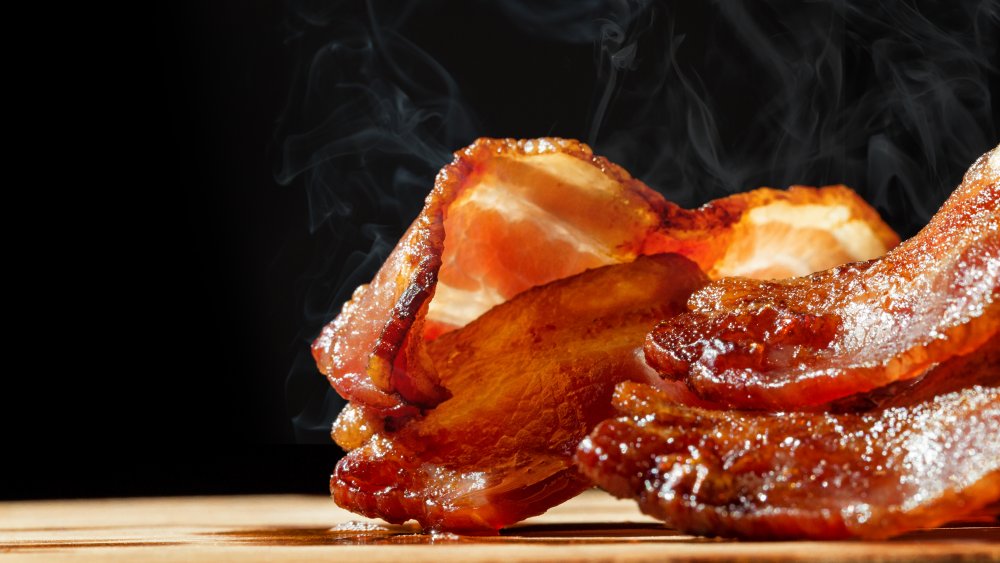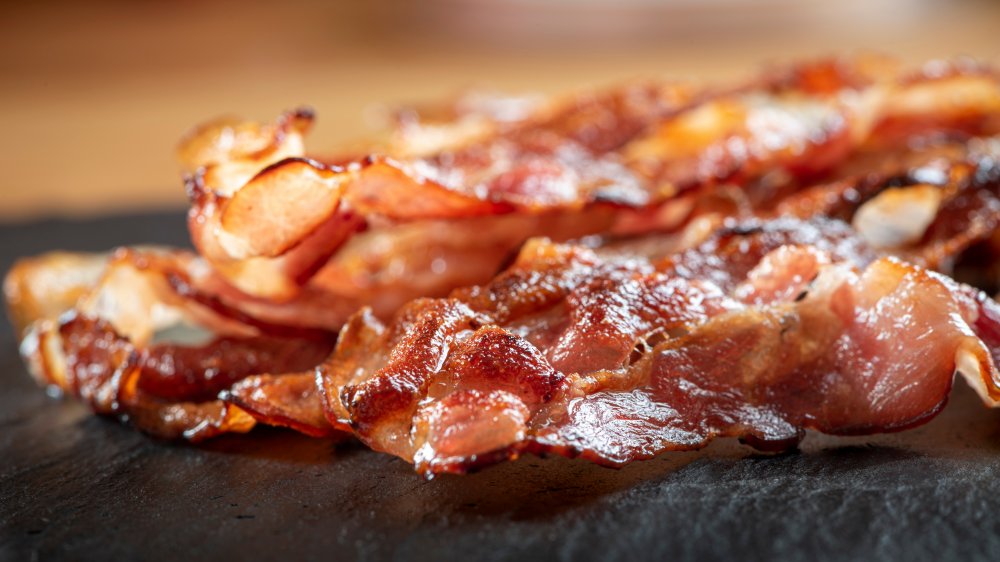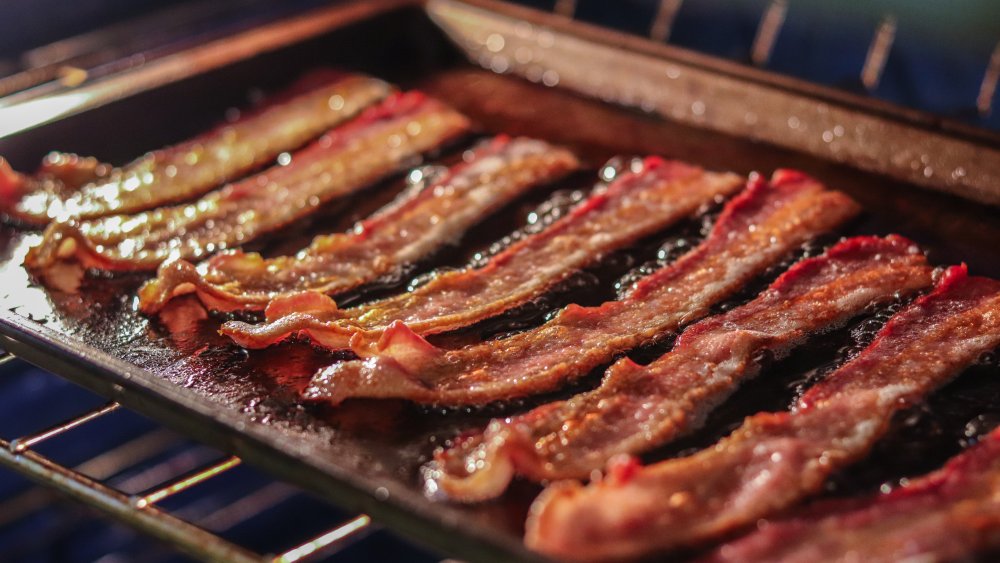This Is Probably Why You Keep Burning Your Bacon
We may receive a commission on purchases made from links.
Mmmmmm bacon. Jim Gaffigan called it the "fairy dust of food" and wondered whether putting bacon bits on a strip of bacon might not just give us the ability to time-travel. Maybe not, but the truth is, most people love bacon.
In the first decade of the 2000s, the salty, smoky indulgence went from being a Sunday breakfast side of dubious nutritional value to a cultural meme (via Smithsonian Magazine). Delicious, nostalgically all-American, and rebellious in its unhealthiness, bacon boomed in the naughts: Bacon vodka, chocolate-covered bacon, bacon in cocktails, bacon ice cream, and even bacon merch.
Though the mania might have faded somewhat, 266.55 million Americans ate bacon in 2019 (via Statista), and we consume about 18 pounds of bacon per capita each year (via Foundation for Economic Education). Seems like we should be bacon experts, right? Maybe we are when it comes to gobbling it up, but these delicious slices of salt-cured pig belly can be tricky to cook perfectly.
How to keep your bacon from burning
One of the most common mistakes people make, especially cooking novices, is burning the bacon. Overcooked bacon is a dry, crumbly disappointment. The reason? This can happen easily if you start with the heat too high. You might think a higher setting is the secret to getting that nice crisp texture, but medium-low is actually the best way to go and allows you to control the doneness (via Eat This, Not That!).
How can you tell when bacon is cooked just right? The best way to judge doneness is by color. Perfectly cooked bacon is golden brown to brick red. If you like it a little darker, go for it, but remember the browner it gets, the drier and more crumbly it becomes. Undercooked bacon is light brown, and don't even think about eating bacon that is still pink or white.
Oven-fried bacon might be the way to go
The secret to perfect bacon might just be to forget your skillet. The editors of the penultimate cookbook, The Best Recipe from the folks at Cook's Illustrated, prepared bacon every way under the sun to come up with the best way to prepare bacon, including pan-frying and microwaving. The winning method was the oven. As a pro, there was less splashing, and as a con, it takes longer than pan-frying's five or so minutes).
The Best Recipe suggests oven-frying your bacon on a raised-edge cookie sheet at 400 degrees for nine or 10 minutes (via Cook's Illustrated). "The texture was more like a seared piece of meat than a brittle cracker... and all of the flavors were just as bright and obvious as when pan-cooked," write the authors. They also noted that oven-frying allowed for a greater margin of error when it comes to timing.
The bottom line? If you have a few extra minutes, give your oven a chance to "fry" up some perfect bacon. Of course, if you are looking for absolutely next-level bacon, consider putting it on your outdoor grill for extra smokiness (and less grease) or try your hand at the chicken-fried variety.


